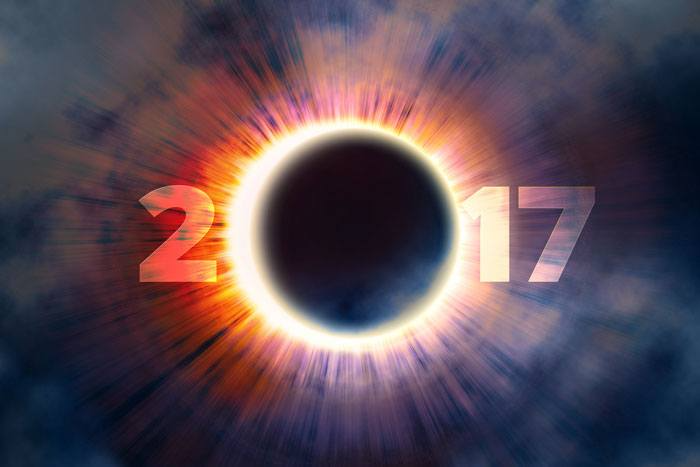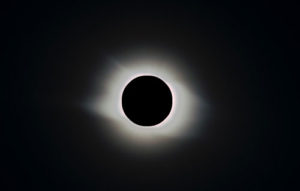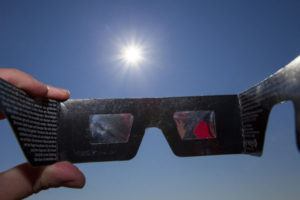How to Keep Your Eyes Safe During The Great American Solar Eclipse
Sub Title

The next total solar eclipse, also known as ‘The Great American Solar Eclipse’, will happen Monday, August 21st. This total solar eclipse will be the first in nearly 100 years to be viewable from coast to coast.
Whether you’re lucky enough be one of the sky gazers along the path of totality or will be catching the partial eclipse viewable from the rest of the US, you need to be prepared to protect your eyes during one of nature’s most remarkable spectacles.
The Solar Eclipse and Eye Protection
Never look at a solar eclipse without proper eye protection. Looking directly at a total or partial solar eclipse (or the sun in general) can permanently damage your vision. This can lead to lasting, irreversible blind spots, solar keratitis, and permanent to your retina.
Is There A Time When I Can Watch the Eclipse with the Naked Eye?

If you’re in this stretch, you will be able to remove your protective eyewear and view the total solar eclipse for about 3 minutes during the eclipse’s ‘period of totality’, where the sun is completely covered by the moon.
However, to safely do this you want to be absolutely vigilant to properly remove and re-protect your eyes with proper protection at the right time.
Read NASA’s detailed step-by-step guide of the eclipse’s phases to learn when you need to wear protective eyewear and what signals the beginning/end of the period of totality.
How to Watch The Eclipse Safely:

A popular option are special eclipse glasses. These glasses have a special solar filter specifically designed to protect your eyes from the sun. Sunglasses will not cut it- ONLY glasses with this special solar filter will properly protect you.
You can find eclipse glasses both in stores and online- although you need to be careful of counterfeits and sub par products. Luckily, The American Astronomical Society has a list of recommended and reputable sellers that you can reference to ensure you’re getting the proper protection you need.
A Pinhole Projector
Many of us learned how to make or learned about pinhole projectors in school. This simple and incredibly cheap trick is a great option for those who are unable to find proper eyewear.
Full instructions on creating a pinhole projector here
NASA Livestream
For those of us who cannot get outside to view the total or partial eclipse, there are still many ways to watch thanks to NASA.
If you visit their 2017 Total Eclipse page you can find links to watch live via their own stream page, Facebook Live, YouTube, Twitter and a plethora of other platforms. They’ll be gathering some of the best views via airplanes, ground telescopes, and high altitude balloons in over 12 locations. You can also tune into their four-hour show ‘Eclipse Across America’ which will provide both live coverage of the event as well as coverage of the parties and activities across the nation.
Remember, stay safe, protect your eyes, and happy eclipse viewing!
Watch Dr. Dougherty describe the potentially negative effects of viewing the solar eclipse without proper protection:

